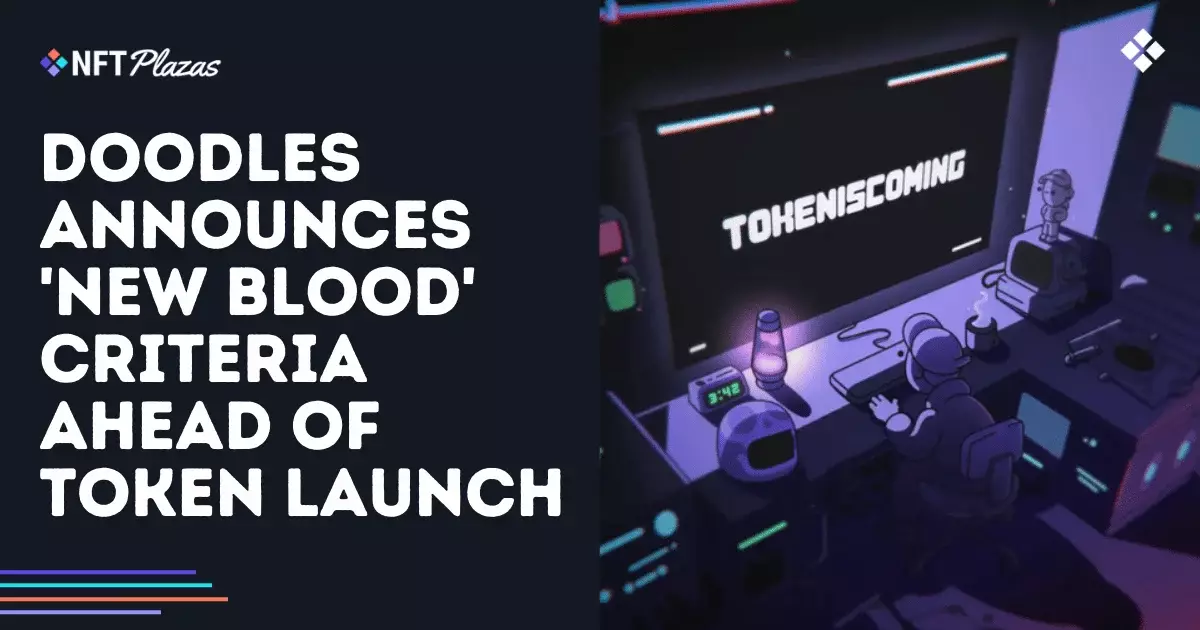The Doodles NFT project has recently taken significant steps in their ongoing evolution, igniting fervor among both seasoned collectors and the curious newcomers eager to dive into the world of non-fungible tokens. With the announcement of the $DOOD token airdrop, a striking 13% of the total token supply will be allocated to a group identified as “New Blood.” This radical approach is more than just a gimmick; it’s a calculated ploy to challenge the conventional hierarchies within the NFT space, positioning Doodles on the cutting edge of innovation.
While the idea of rewarding non-holders might seem revolutionary or even generous, it’s essential to analyze the implications of such a strategy. The pre-established community, which has heavily invested in Doodles, finds itself at risk of dilution. Are we genuinely witnessing an embrace of inclusivity, or could this move signify a desperate bid to capture attention in an increasingly saturated market?
Tokenomics That Raise Eyebrows
Doodles has explicitly laid out the distribution of its $DOOD tokens: 30% allocated forCurrent Doodles holders, 25% to bolster the ecosystem development fund, and the remaining 32% designated for team allocation and liquidity. This may sound reasonable on the surface; however, the prioritization of “New Blood” raises serious questions.
With a considerable portion of the tokens earmarked for participants outside the existing community, one must ask: is this encouraging collaboration and a broader ecosystem, or is it undermining the loyalty of current Doodles holders? The inequitable focus on attracting new users feels like a slap in the face to those who have stood by the project from the outset, effectively saying that the commitment of long-standing members carries less weight than that of newcomers.
Eligibility: Who Gets in and Who Gets Left Out
The eligibility criteria for the “New Blood” group further complicate this narrative. The team behind Doodles has identified specific web3 platforms and communities whose members will automatically receive the $DOOD tokens. Participants from various ecosystems, including Solana and BNB Chain projects, will benefit without the hassle of registration.
While the access granted to a diverse array of users can be cast as a boisterous celebration of inclusiveness, it simultaneously risks fracturing a community that has relied on shared values and interests. The criteria seem arbitrarily favoring users from partner projects, leaving a question mark for those individuals who have engaged robustly with the Doodles ecosystem but do not meet the pre-established criteria.
This stratification of community participation creates an unbalanced power dynamic that could lead to resentment among those who feel overlooked. Is the desire to expand worth the potential fallout affecting core supporters?
The Utility of $DOOD: A Sign of Real Value or Just Hype?
Although the utility of the $DOOD token remains somewhat ambiguous, Doodles has hinted that it will provide access and facilitate participation in its ecosystem. The vagueness surrounding its utility could hint at larger monetary or social ambitions, as the company looks to capitalize on the hype of the ever-growing NFT market.
However, this leaves the question of substance swirling in the air. Will $DOOD become a vital cog in a thriving ecosystem, or will it merely be another crypto fad destined for obscurity? While the ambition is commendable, the execution must deliver real, tangible value to avoid falling into the abyss of overhyped projects that inevitably fail to meet expectations.
The $DOOD token airdrop represents a pivotal moment for Doodles, embodying both the potential and the perils that come with significant change. While a new push for inclusivity could succeed in elevating the project, it also carries the risk of alienating the very users who helped build its reputation. As the announcement unfolds and the token distribution nears, participants must remain vigilant, balancing optimism against skepticism to navigate the complex landscape of the NFT industry.















